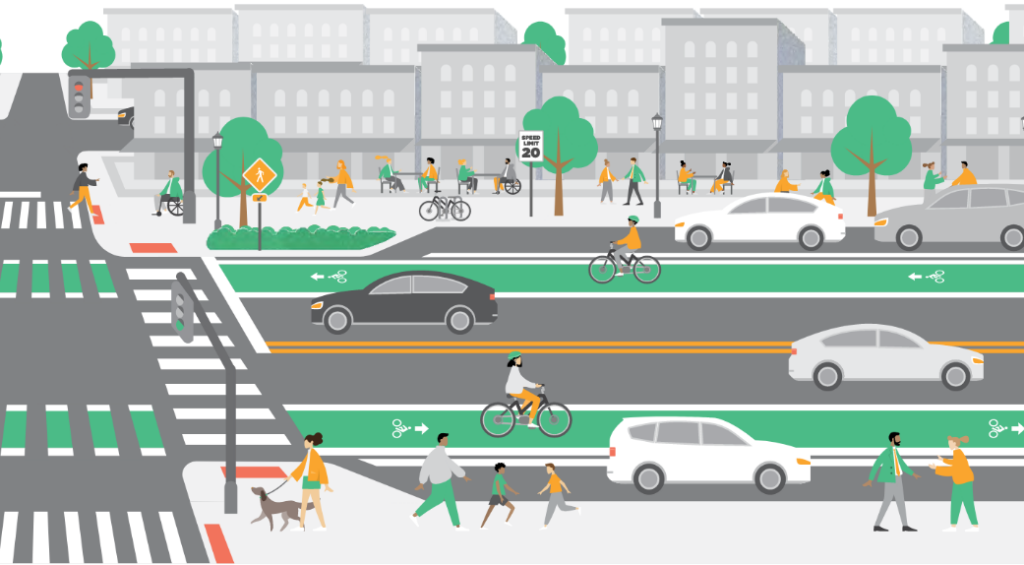The 15-minute city (FMC) is an urban planning concept in which most daily necessities and services are located within a 15-minute walk or bike ride. These include and are not limited to healthcare, education, shopping, and leisure activities. This approach’s goal is to reduce car dependency, promote healthy and sustainable living, and improve the quality of life of city dwellers.
The idea of the 15-minute city isn’t new. It is important to note that the concept gained new momentum during the pandemic, which altered not only our daily lives but also ideas about the future of urban design. Initially, the concept was derived from historical ideas about proximity and walkability. Officially, the term was coined in 2016 by Carlos Moreno, a professor at the Sorbonne in Paris, to rethink urban planning.
The 15-Minute City Project is designed to help access-focused urban transformations be ambitious, inclusive, measurable, and effectively implemented. The 15-Minute City project was created by Dan Luscher, an urbanist and long-time San Francisco resident with a passion for making cities work for everyone.

Implementing the 15-minute city concept requires a multi-disciplinary approach that involves urban design, transportation planning, and policymaking. The 15-minute city offers a mobility concept in which cards become less present while there is more space for cyclists and pedestrians. Generally, 15-minute cities are healthy for their residents because they encourage walking and discourage reliance on cars.
Cities around the globe have adopted policies inspired by the 15-minute model. In this way, they are aiming to improve their livability and sustainability. The notion has gained significant importance in recent years after Paris mayor Anne Hidalgo included a plan to implement the 15-minute city concept in her 2020 re-election campaign. Since then other cities around the world have employed this technique to improve the quality of life. Examples include Utrecht in the Netherlands, Cagliari in Italy, Portland in the USA, Melbourne in Australia, and more.

The 15-minute city offers a boost to the local economy. This means more footfall for local high streets, more local and diverse employment opportunities, and more productive use of buildings and street space. Moreover, there is an opportunity for a more inclusive and equitable city with a stronger sense of community. Equity and inclusivity are at the heart of any successful 15-minute city approach, from prioritizing the most underserved areas to designing streets and active travel schemes for the most vulnerable people. It is of course known that this practice would benefit people’s health and wellbeing resulting from active travel, cleaner air, and easy access to green spaces.
Although the 15-minute city has many benefits, there are some limitations. One such difficulty is implementing the concept in established urban areas where land use patterns and infrastructure are already in place. Moreover, this may not be feasible in places with low population density or in low-income communities where transportation options are limited. Another issue that may be faced is the fact that this is not a universal model. It could be easier to implement the 15-minute concept in cities with less urban sprawl (cities in Europe) than in cities with extensive sprawl (cities in North America). In this context, urban sprawl is the spreading of urban developments such as houses and shopping centers on undeveloped land near a city.
Despite the seemingly positive effect of the 15-minute city concept, there has been a significant amount of criticism it has received. According to Edward Glaeser, the basic concept of a 15-minute city isn’t really a city but a subdivision. Moreover, earlier this year conspiracy theories about the idea. According to AP News, some believe that the 15-minute cities are designed to restrict people’s movement, increase government surveillance, and infringe on their individual rights. In fact, the urban planning concept focuses on building more compact, walkable communities where people are less reliant on cars.









